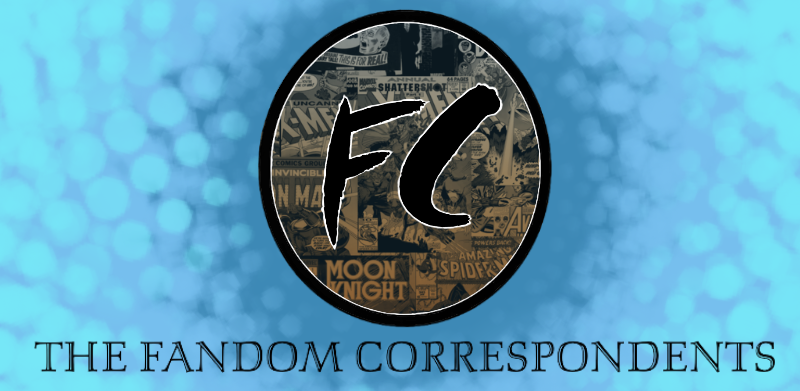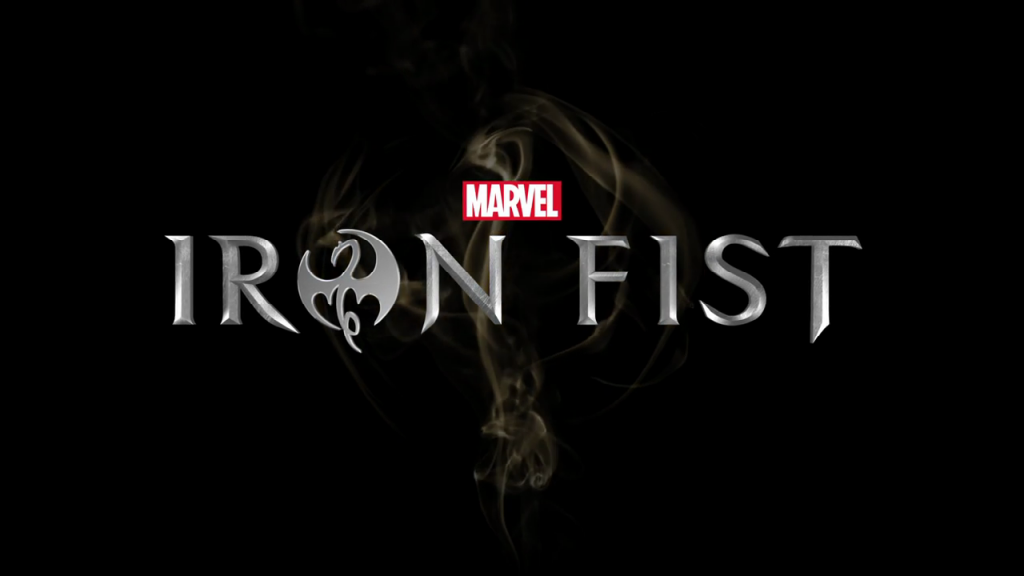Look, everyone, we need to talk.
So Iron Fist, the latest in Marvel’s series of Netfllix shows, is not very good. It starts out at a 3 and gradually achieves a semi-solid. And honestly, that’s OK. Marvel is allowed to put out something that’s not terrific, and no one can genuinely complain about Iron Fist’s quality when Guggenheim’s masturbatory fanfiction that is Arrow is still on the air. The quality of Iron Fist, while below Marvel’s usual standards, is not inherently offensive and thus is not the reason we need to talk.
The show’s treatment of mental healthcare, on the other hand, is another subject entirely.
As early as episode 2, Iron Fist throws itself into the fire of mental healthcare by using a psychiatric hospital—well, at least what they’re telling us is a psychiatric hospital—as its major setting. This was a bold move, and I was initially excited to see this move since mental illness has previously only been hinted at in passing in Marvel projects with few exceptions. However, as the episode proceeded, my excitement slowly wore away and yielded to disappointment and bemusement at just how inaccurate their portrayal of mental healthcare turned out. The show has been out for a while now, so I have been growing more and more surprised at the fact that no one else seems to have noticed how poorly this subject matter was handled. This is why I’m writing this article, my friends.
We need to talk about mental healthcare.
For some background, I am a mental healthcare professional–bachelors pursuing a masters pursuing a doctorate in clinical and forensic psychology. I have worked at a psychiatric hospital for a year, and my work and volunteer experience with the mentally ill total well over three years. I like to think I know my stuff respectably well. I also think that the writers for Iron Fist emphatically do not know their stuff. So just what was so inaccurate about Iron Fist’s portrayal of a psychiatric hospital that I found so upsetting? Well, here we go (SPOILERS for early episodes of Iron Fist).
I’m pretty sure that initial scene in the hospital speaks for itself, but let’s recap for fun. We find our protagonist Danny Rand strapped down to a table in an isolation room while a man in a white lab coat speaks to him, presumably a doctor. This man then tries to kill Danny, and we learn that he was actually a fellow patient who stole a doctor’s coat and snuck into a seclusion room holding a restrained patient.
If I had a week to explain everything wrong with this scene, it wouldn’t be enough time. So let’s act like Kanye West and hit the highlights: in a real psych hospital, patients would not have been able to get a doctor’s lab coat. Those things aren’t just lying around. They’re, you know, being worn by doctors. Also, patients would not be able to get into other rooms that easily. Rooms not meant for patient entry are locked. Understandably so, seclusion rooms are definite no-fly zones for patients to walk into, especially with a damn patient currently inside of one. By the way, patients are rarely restrained, and if they are, they are not left unsupervised. At psych hospitals, we intensely care about our patients, and patient safety is the absolute top priority. Basically, think the exact opposite of this scene where orderlies—not licensed nurses or doctors, orderlies—stab Danny in the neck—you know, where arteries lie—with medicine to knock him out without checking to see if he’s harmed after just having a metal fork (hmm, how’d that end up in a psych hospital) shoved in his neck. I personally think that’s a little unsafe, but what would a humble man with actual clinical experience know?
I can’t talk about this scene without mentioning that Danny is in a seclusion room in restraints for safety purposes yet still has a lamp to keep him company. A lamp, for those who don’t know, can be used as a blunt object for bludgeoning and has a cord that can be used for strangling. But it’s understandably just sitting there chilling with a dangerous supposedly psychotic man. Eh, semantics.
While this opening scene is the most blatantly ridiculous portrayal of psychiatric care, it is not the only incidence. I personally couldn’t go more than 5-10 minutes watching it without pausing to rub my temples and question how low their research budget was to so poorly reproduce mental healthcare in America. Openly aggressive patients are left to freely intermix with confused and victimized patients. Danny, despite being considered extremely dangerous, is left alone with a doctor in his office full of electronics and ways to hurt himself or others. Orderlies are charged with giving medications despite the national standard being licensed nursing professionals. Readers, a damn straight jacket is used. Let us dispel this myth here and now: straight jackets are not a modern staple of psychiatric care. In all my clinical experience, I have never even seen a straight jacket, let alone used one on a patient.
Now, I’m sure many of you are wondering why any of this matters. Sure, the portrayal of psychiatric care is flawed and inaccurate, but what’s the big deal?
Because mental illness, unlike Iron Fist, is real.
Some people are legitimately ill. And unfortunately, some people are so severely ill that they have to be institutionalized, some for only a little and some for a very long time. By making their portrayal of mental illness and mental healthcare so scary and flawed, Marvel has perpetuated the stigma that the mentally ill already face every single day and has contributed to one of the most dangerous lies of our society: it’s not safe to seek help.
The patients in Iron Fist had it all figured out. Once you get a diagnosis, you’re there for good. The psych hospital is your new home, and you’ll be incredibly lucky if you ever leave and get to see your family again. If you don’t take anything else from this article, please understand this: nothing is further from the truth. As soon as we get a new patient, there are as many as 30 different people working together to get that person stabilized, keep them safe, and send them home in a better emotional and psychological place than they were when they arrived. Patients receive three meals a day and additional snacks, are allowed outside as long as it is a safe environment, and are offered classes and activities to improve their health and quality of life inside and outside of the hospital. And believe me, there is nothing we hate more than when patients have to stay any longer than the minimum length required for their case.
If I were undergoing severe psychological distress, Iron Fist’s portrayal of mental healthcare would scare me away from ever seeking clinical help. Honestly, the way the show fetishizes homelessness and demonizes mental healthcare makes me question what point the show’s producers were really trying to convey. Is it better to live under a bridge dying of a drug overdose than to stay in a psychiatric hospital where you are fed, provided shelter and clothes, and are cared for by people seeking treatment and placement for you to improve your life? But then again, those qualities found in real facilities were nowhere to find in Iron Fist.
Perhaps the show’s rushed production is to be blamed. Perhaps Marvel didn’t have the time or resources to have people do actual research on psychiatric care or medications (by the way, thorazine is not a lobotomy drug. I actually had to stop the episode to laugh at how ridiculous and uninformed that line was). Perhaps there was a deeper meaning to the antiquated treatment of psych care that I didn’t quite get. Perhaps the show’s writers just had a ridiculously bad experience with a poorly run psych hospital that tainted their perception of healthcare. Whatever is to be blamed for the portrayal, the question remains: when are we going to stop glamorizing mental illness and start admitting that maybe scientists and doctors know more than we do?
This is not a new issue. From such media as Perks of Being a Wallflower and Twilight to such music as Lana del Ray and 21 Pilots to the demonization of mental healthcare by Iron Fist and Hannibal, society’s understanding of mental illness is so delusional that I can basically taste the irony (it tastes like blood and not-yet-ripe zucchini, by the way). Let me say this as a mental healthcare professional and friend to many with mental illnesses: psychological disorders are not beautiful. The people who suffer from them are. But the disorders themselves are a source of incredible pain and distress than need more specialized help than some BS artistic sense of superiority can provide.
If you struggle with mental illness, I hear you. And I want to tell you that it’s safe to seek help. Whether it be a licensed therapist, social worker, psychologist, psychiatrist, or psych hospital, you will be safe. Workers won’t go around blabbing your confidential information to anyone on the phone, and you won’t be left to rot in a padded room. And if you’re one of the many people who know someone with a mental illness, encourage them to find help. Be there for them, offer to go the therapy sessions with them, hold them accountable with their medication. They need friends during such trying times. And finally, if you’re one of the people who glamorize mental illness, who ridicule and demonize psychiatrists and mental healthcare, and who go out of their way to tell people that their suffering and suicidality are what makes them unique, then I have news for you. Your devotion to dramatic irony is hurting people, and you’re no better than the delusional preacher who tries to pray the gay away.
If you victimize the mentally ill like that, then you and me—we need to talk.

